Crime
What did Canada Ever Do to Draw Trump Tariff on Immigration, You Ask? Plenty
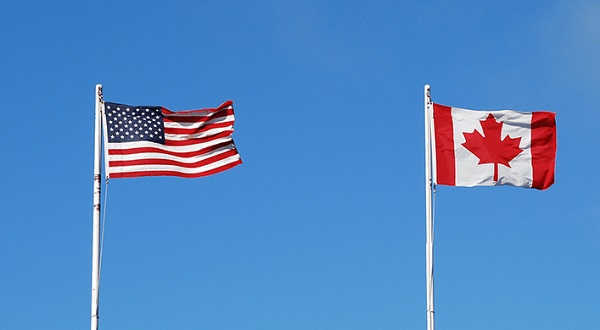
By Todd Bensman as published by The Daily Wire
Much US national security and public safety damage from: an historic Canadian legal immigrant importation program and making Mexican travel visa-free.
President-elect Donald Trump bloodied Mexico and Canada with diplomatic buckshot this week by writing that, on his first day in office, he’ll levy devastating 25-percent trade tariffs on those two U.S. neighbors if they fail to crack down on illegal immigration and drug trafficking.
Much public puzzlement has filled international media coverage over why Trump would single out Canada for punishment equal to that of the far guiltier Mexico.
“To compare us to Mexico is the most insulting thing I’ve ever heard from our friends and closest allies, the United States of America,” Ontario Premier Doug Ford said. “I found his comments unfair. I found them insulting. It’s like a family member stabbing you right in the heart.”
“We shouldn’t confuse the Mexican border with the Canadian border,” Canadian Industry Minister Francois-Philippe Champagne said.
But this narrative seems intended to deflect public acknowledgement of what the liberal progressive government of Justin Trudeau did do to draw Trump’s tariff ire. In terms of immigration policy, the Canadian offenses are indeed much different from Mexico’s opened super-highway mass migration wave-throughs during the Biden-Harris years. But what Canada has done, arguably, damaged U.S. national security and public safety interests in harmful ways that media outlets on both sides rarely report.
Canada’s massive legal immigration program as a U.S. national security threat

Much of the damage arises from an historic Canadian legal immigrant importation program of unprecedented scope. Since the program’s 2021 implementation, the Great White North has imported some 1.5 million foreign national workers (400,000+ per year for the nation of 38 million) from dozens of developing nations and hundreds of thousands more foreign students in just 2023 – the third record-breaking year of those.
Why are those programs a U.S. problem? Because a spiking number of foreign nationals are apparently abusing the Canadian programs as a Lilly pad from which to illegally enter the United States between northern border land ports of entry, among them proven threats to U.S. national security and public safety.
Why this traffic leaking into the United States is a problem – even though the total numbers illegally entering from Canada are small relative to those crossing from Mexico – arises from the fact that many hail from Muslim-majority nations and have, Canadian media reports, fueled a spate of terrorism and anti-Semitic attacks throughout Canada. As well, far too many of the Mexicans Canada has allowed in turned out to be cartel drug traffickers and killers.
Those kinds of criminals are crossing the U.S. northern border in increasing numbers due to Canadian policies that Canada could address if it wanted to.
Consider that U.S. Border Patrol apprehensions in the brush between U.S.-Canada land ports of entry jumped from 2,238 in FY2022 to 23,721 in FY2024, neatly coinciding with Trudeau’s mass legal immigration programs.
Among those crossing in illegally from Canada, for instance, were 15,827 Indian nationals in FY 2023 and 2024, 8,367 Mexicans, and 3,833 from unspecified countries listed only as “Other” on the U.S. Customs and Border Protection’s public statistics website.
A border-crossing terror plot foiled
Concern on both sides of the U.S.-Canada line has simmered for some years as Canadians saw the newcomers carry out terror plots, actual attacks, and probably some of the record-breaking nearly 6,000 antisemitic incidents Canada logged since the Israel-Hamas war broke out.
What’s been happening in Canada was obvious to many.
“Canada has become a hotbed of radicalization, fanaticism, and jihadism,” wrote Casey Babb, Senior Fellow with the Macdonald-Laurier Institute in Newsweek shortly after the arrest. “As un-Canadian as it sounds, Canada has a terrorism crisis on its hands and that should worry the United States for a whole host of reasons.”
Concern would reach an apogee in October 2024, when a joint U.S.-Canadian counterterrorism operation thwarted a plot by a Pakistani student on a Canadian visa to illegally cross the northern border to conduct an October 2024 massacre of Jews in New York.
Muhammad Shahzeb Khan, a 20-year-old Pakistani citizen legally issued a Canadian student visa in June 2023, now stands accused in U.S. federal court of plotting an illegal-smuggler-assisted northern border crossing to carry out a mass shooting of Jews in New York City to celebrate with blood the October 7 anniversary of the Hamas massacre in Israel. Khan hoped it would go down in history as “the largest U.S. attack since 9/11”.
“We are going to nyc (sic) to slaughter them” with AR-style rifles and hunting knives “so we can slit their throats,” Khan told an undercover FBI agent he believed to be a co-conspirator, according to an agent complaint. “Even if we don’t attack an event we could rack up easily a lot of Jews.”
His was among the record-breaking 400,000 foreign student visas Canada issued in 2023.
That alarming new terrorism prosecution in New York State should have been enough to renew Trump’s interest in turning diplomatic pressure onto Canadian Prime Minister Trudeau’s mass legal immigration policies and border security on its side.
But terrorists cannot be the only concern.
Mexican cartel killers and traffickers in Canada crossing too
The incoming Trump administration 2.0 will need to force resolution of another issue of U.S. public safety concern dating to an especially damaging 2016 Trudeau move that went unaddressed until only recently. Trudeau rescinded 2009 visa requirements on Mexican citizens and against the advice of his own government that Mexican criminals would abuse the policy to fly in at will and bedevil Canadian cities and northern American ones too.
That’s just what was happening again by early 2017. A sustained surge was underway of Mexican nationals who, unable to easily cross the southern border under Trump 1.0, were flying over the United States into Canada. They would claim Canadian asylum, then cross southward over the less tended northern U.S. border.
Among them were the predictable – and predicted – Mexican cartel operatives.
Leaked Canada Border Services Agency intelligence reports said Mexican “drug smugglers, human smugglers, recruiters, money launders and foot soldiers” were turning up in greater numbers than ever before. The cartels went to work building human smuggling networks to move other Mexicans south over the American border, just as they did all along the southern border.
In July 2017, Global News quoted published the intelligence reports saying the ultra-violent Sinaloa cartel had turned up in Canada to “facilitate travel to Canada by Mexicans with criminal records.” Others identified included La Familia Michoacana, Jalisco New Generation, and Los Zetas.
For instance, whereas the reports said 37 Mexicans linked to organized criminal groups had entered between 2012 and 2015, 65 involved in “serious crimes” were identified midway through just 2017, compared to 28 in 2015. By May 2019, at least 400 Mexican criminals connected to drug trafficking, including sicario hitmen, were plying their trades in Canada, at least half of them in Quebec, according to a May 24, 2019, report in the Toronto Sun and other Canadian media outlets.
All had entered through the Trudeau visa loophole for Mexicans.
By the end of 2019, Canada saw a 1,400 percent spike in the number of bogus Mexican refugee claims, the vast majority naturally rejected, and of associated detentions.
Canada finally about to face the music
Only in February 2024 did the Americans pressure the Canadians finally begin to roll back some – but not all — of its visa-free Mexicans policy, because the influx had clogged Canada’s asylum system with too many bogus claims and also sent too many Mexicans illegally over the U.S. border, which presented a politically terrible look as the 2024 presidential election campaign got underway. Now, only Mexicans who already hold a US visa or old Canadian one can travel visa-free, while most other Mexicans with neither will have to apply for a Canadian one.
But the damage that must be managed today is by now well baked into the cake.
From January to mid-October 2022, for instance, 7,698 Mexican asylum seekers took direct flights from Mexico City to Montreal, according to a November 2022 Canadian Press story. The paper quoted officials at nonprofit refugee assistance groups attesting that most fly to Canada because they found out Trudeau’s visa-free policy also got them government financial assistance while awaiting their mostly denied asylum applications.
In their October 2021 book, The Wolfpack: The Millennial Mobsters Who Brought Chaos and the Cartels to the Canadian Underworld, journalists Peter Edwards and Luis Najera established that the Sinaloa Cartel now has a foothold across eastern Canada, with “solid control of cocaine shipments in and out of Canada.” The Arellano Felix group has its foothold in Vancouver and in the state of Alberta.
The Zetas are in Canada “involved with temporary migrant workers”.
Asked in 2023 if Canada’s importance to Mexican organized crime had increased “in recent years,” co-author Luis Najera answered: “I would say it has increased since criminal cells moved up north to settle and expand operations here. It is also strategic to have groups operating north of the U.S. border, close to key places such as Chicago and New York, and without the scrutiny of the DEA and rival groups.”
Canada is not Mexico but its policies pose consequences for the United States. Any normal U.S. administration would put Canada on the hook for adjusting its policies and more robustly guarding its supposedly treasured neighboring ally, the United States, from harm. If punishing trade tariffs finally focus Canada’s attention on those policy-driven harms, let them last until Canada fixes what it recklessly broke.
Crime
‘We’re Going To Lose’: Steve Bannon Warns Withholding Epstein Files Would Doom GOP


From the Daily Caller News Foundation
By Jason Cohen
Former White House adviser Steve Bannon warned on Friday that Republicans would suffer major losses if President Donald Trump’s administration does not move to release documents related to deceased pedophile Jeffrey Epstein’s crimes and associations.
Axios reported on Sunday that a two-page memo showed the Department Of Justice (DOJ) and FBI found no evidence Epstein kept a “client list” or was murdered, but public doubts have continued. Bannon said on “Bannon’s War Room” that failure to release information would lead to the dissipation of one-tenth of the Make America Great Again (MAGA) movement and significant losses for the Republican Party in the 2026 midterms and the 2028 presidential election.
Dear Readers:
As a nonprofit, we are dependent on the generosity of our readers.
Please consider making a small donation of any amount here.
Thank you!
“It’s not about just a pedophile ring and all that, it’s about who governs us, right? And that’s why it’s not going to go away … For this to go away, you’re going to lose 10% of the MAGA movement,” Bannon said. “If we lose 10% of the MAGA movement right now, we’re going to lose 40 seats in ’26, we’re going to lose the [presidency]. They don’t even have to steal it, which they’re going to try to do in ’28, because they’re going to sit there and they go, ‘They’ve disheartened the hardest-core populist nationalists’ — that’s always been who governs us.”
Bannon also demanded the publication of all the Epstein documents on “Bannon’s War Room” Thursday. He called on the DOJ to go to court and push for the release of the documents or for Trump to appoint a special counsel to manage the publication.
Epstein was arrested in 2019 and charged with sex trafficking. Shortly after, he was found dead in his New York Metropolitan Correctional Center cell shortly after. Officials asserted that he hanged himself in his cell.
However, Epstein’s death has sparked years of theories because of the malfunctioning of prison cameras, along with guards admitting to falsifying documents about checking on the then-inmate. The DOJ inspector general later confirmed that multiple surveillance cameras outside of his cell were inoperable, while others captured the common area outside his door.
Both Bannon and Daily Caller News Foundation co-founder Tucker Carlson have speculated that Epstein had connections to intelligence agencies.
Former Labor Secretary Alex Acosta allegedly indicated that Epstein was tied to intelligence, according to Vicky Ward in The Daily Beast.
Crime
Sweeping Boston Indictment Points to Vast Chinese Narco-Smuggling and Illegal Alien Labor Plot via Mexican Border
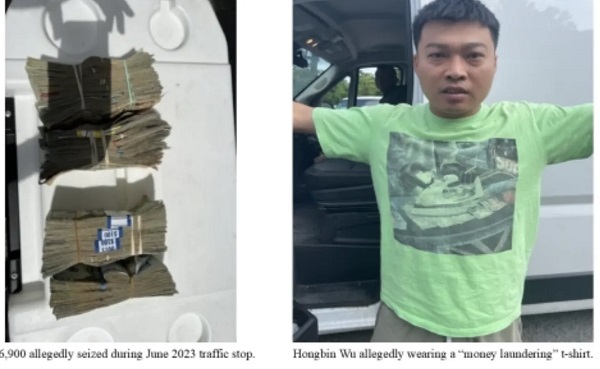
 Sam Cooper
Sam Cooper
Case details a pipeline from China through Mexico, trapping trafficked illegal migrants as indentured workers in a sweeping drug network.
In a sweeping indictment that tears into an underworld of Chinese narco infiltration of North American cities — including the smuggling of impoverished Chinese nationals across the Mexican border to work as drug debt slaves in illegal drug houses — seven Chinese nationals living in Massachusetts stand accused of running a sprawling, multimillion-dollar marijuana trafficking and money laundering network across New England.
The backdrop of the human smuggling allegations stretches back to 2020, as an unprecedented wave of illegal Chinese migrants surged across the U.S. border with Mexico — a surge that peaked in 2024 under the Biden administration before the White House reversed course. This explosive migration trend became a flashpoint in heated U.S. election debates, fueling concerns over border security and transnational organized crime.
Six of the accused, including alleged ringleader Jianxiong Chen of Braintree, were arrested this week in coordinated FBI raids across Massachusetts. The border exploitation schemes match exactly with decades-long human smuggling and Chinese Triad criminal pipelines into America reported by The Bureau last summer, based on leaked intelligence documents filed by a Canadian immigration official in 1993. A seventh suspect in the new U.S. indictment, Yanrong Zhu, remains a fugitive and is believed to be moving between Greenfield, Massachusetts, and Brooklyn, New York.
The case paints a striking portrait of China-based criminal organizations operating behind the quiet facades of upscale American suburban properties. Prosecutors allege the defendants owned or partnered with a network of sophisticated indoor grow houses hidden inside single-family residences in Massachusetts, Maine, and beyond, producing kilogram-scale shipments of marijuana. According to court documents, the marijuana was sold in bulk to distributors across the Northeast, and the profits — amounting to millions — were funneled into luxury real estate, cars, jewelry, and further expansion of their illicit operations.
“During a search of [ringleader Chen’s] home in October 2024, over $270,000 in cash was allegedly recovered from the house and from a Porsche in the driveway,” the indictment alleges, “as well as several Chinese passports and other identification documents inside a safe.”
According to the indictment, Chen’s cell phone data confirmed his personal role in orchestrating smuggling logistics and controlling workers. Additional searches of homes where co-defendants lived yielded over 109 kilograms of marijuana, nearly $200,000 in cash, and luxury items including a $65,000 gold Rolex with the price tag still attached.
A photo from the indictment, humorously but damningly, shows alleged ring member Hongbin Wu, 35, wearing a green “money laundering” T-shirt printed with an image of a hot iron pressing U.S. dollar bills on an ironing board — a snapshot that encapsulates the brazenness of the alleged scheme.
Key to FBI allegations of stunning sophistication tying together Chinese narcos along the U.S. East Coast with bases in mainland China is a document allegedly shared among the conspirators.
“The grow house operators maintained contact with each other through a list of marijuana cultivators and distributors from or with ties to China in the region called the ‘East Coast Contact List,’” the indictment alleges.
Investigators say the conspiracy reveals a human smuggling component directly tied to China’s underground migration and debt bondage networks, mirroring exactly the historic intelligence from Canadian and U.S. Homeland Security documents reported by The Bureau last summer.
The alleged leader, 39-year-old Jianxiong Chen, is charged with paying to smuggle Chinese nationals across the Mexican border, then forcing them to work in grow houses while withholding their passports until they repaid enormous smuggling debts.
“Data extracted from Chen’s cell phone allegedly revealed that he helped smuggle Chinese nationals into the United States — putting the aliens to work at one of the grow houses he controlled,” U.S. filings say.
“This case pulls back the curtain on a sprawling criminal enterprise that exploited our immigration system and our communities for personal gain,” said U.S. Attorney Leah Foley. “These defendants allegedly turned quiet homes across the Northeast into hubs for a criminal enterprise — building a multi-million-dollar black-market operation off the backs of an illegal workforce and using our neighborhoods as cover.”
The arrests come amid a surge of Chinese migrants entering the U.S. through Mexico, part of a pattern previously exposed in Canadian diplomatic and intelligence reporting. In 1993, a confidential Canadian government study, “Passports of Convenience,” warned that Chinese government officials, in collusion with Triads and corrupt Latin American partners, were driving a multi-billion-dollar human smuggling business. That report predicted that tens of thousands of migrants from coastal Fujian province would flood North America, empowered by Beijing’s tacit support and organized crime’s global reach.
It also warned that mass migration from China in the 1990s came during a time of political upheaval, a trend that has apparently re-emerged while President Xi Jinping’s economic and political guidance has been increasingly questioned among mainland citizens, particularly since the Covid-19 pandemic crisis and lockdowns inside China.
The 1993 report, obtained and analyzed exclusively by The Bureau, described how the Triads — particularly those connected with Chinese Communist networks in Fujian — would leverage human smuggling to extend their influence into American cities. The migrants, often saddled with debts of $50,000 or more, became trapped in forced labor, prostitution, or drug networks, coerced to repay their passage fees.
“Alien smuggling is closely linked to narcotics smuggling; many of the persons smuggled in have to resort to prostitution or drug dealing to pay the smugglers,” the 1993 Canadian immigration report says.

Citing legal filings in one U.S. Homeland Security case, it says a Triad member who reportedly smuggled 150 Fujianese migrants into New York stated that if fees aren’t paid “the victims are often tortured until the money is paid.”
Supporting these early warnings, a 1995 U.S. Department of Justice report echoed the Canadian findings, stating that “up to 100,000 Chinese aliens are smuggled into the United States each year,” with 85 percent originating from Fujian. The DOJ report also cited allegations of “negotiations between the Sun Yee On Triad and the Mainland Chinese Government,” suggesting that smuggling and criminal infiltration were tolerated — if not orchestrated — to extend China’s economic and political influence abroad.
That report added American investigators and immigration officials concluded it was nearly impossible to counter waves of illegal immigration from China with deportation orders, and the government should focus on “the larger menace working its way into U.S. cities: Chinese transnational criminal organizations.”
“To combat the growing threat of Asian organized crime in the West,” it says, “law enforcement officials must tackle this new global problem through an understanding of the Triad system and the nature of its threat to Western countries.”
In New England, the Braintree indictment shows how those old predictions have not only materialized but scaled up.
These networks operate by embedding Chinese nationals into illicit industries in North America, from black-market cannabis cultivation to high-end money laundering. Once inside, they channel profits back through complex underground banking channels that tie the North American drug economy to China’s export-driven cash flows and, ultimately, to powerful actors in Beijing.
In recent years, Maine has emerged as a strategic hotspot for illicit Chinese-controlled marijuana operations. As The Bureau has reported, the state’s vast rural areas, lax local oversight, and proximity to East Coast urban markets have made it a favored location for covert grow houses.
-

 COVID-194 hours ago
COVID-194 hours agoFDA requires new warning on mRNA COVID shots due to heart damage in young men
-
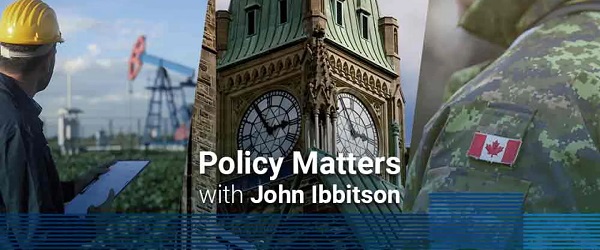
 Business2 hours ago
Business2 hours agoCarney’s new agenda faces old Canadian problems
-
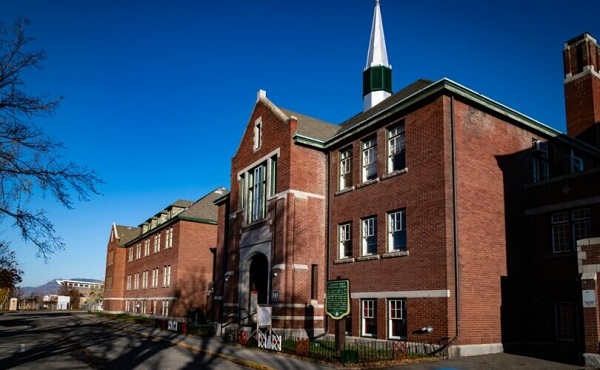
 Indigenous3 hours ago
Indigenous3 hours agoInternal emails show Canadian gov’t doubted ‘mass graves’ narrative but went along with it
-

 Bruce Dowbiggin5 hours ago
Bruce Dowbiggin5 hours agoEau Canada! Join Us In An Inclusive New National Anthem
-
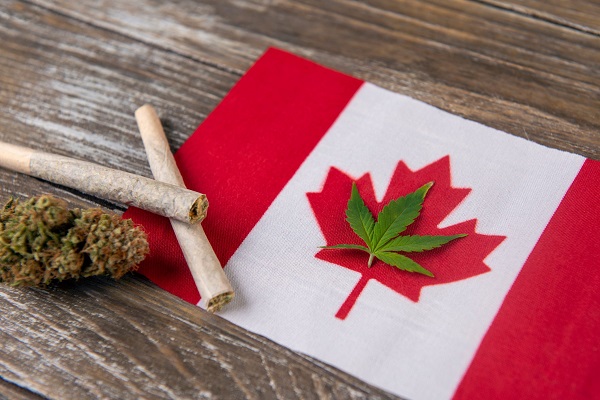
 Business2 days ago
Business2 days agoCannabis Legalization Is Starting to Look Like a Really Dumb Idea
-

 Bruce Dowbiggin2 days ago
Bruce Dowbiggin2 days agoThe Covid 19 Disaster: When Do We Get The Apologies?
-

 Media2 days ago
Media2 days agoCBC journalist quits, accuses outlet of anti-Conservative bias and censorship
-
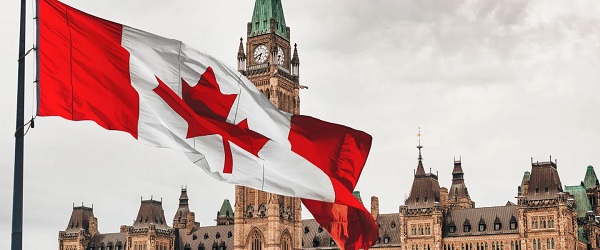
 Business2 days ago
Business2 days agoCarney government should recognize that private sector drives Canada’s economy





